I have just returned from my stay in Tiantai Shan and after many trials and tribulations (mostly involving traveling during the winter) Zachary David and I managed to make our first visit up to Tiantai Shan, the site of the Phase II Giant Panda Reintroduction Training pens on January 13th.
I’d never had the pleasure of visiting, so the purpose of this visit was to get the lay of the land and come up with a protocol design. We’d been hoping that Zachary and I would be able to do a planning visit and also have enough time to do an entire run through our research protocol while I was in country, but with the delay of my bags that contained our camera trap equipment, we had to settle for the just the planning visit. We followed the planning visit with a session of very intensive protocol design before I returned home. Here’s a photo journey of our first visit to Tiantai Shan:

The breathtakingly, snowy scenery from our car during the drive up.
It all started with a 20 minute car ride up from Gengda along a winding, snowy road which required tire chains to navigate. The car was bone-chillingly cold but the scenery was absolutely beautiful and we lucked out with a clear, sunny day after a night of snow. The car finally pulled up at the end of the road and we got out to start our ~4km hike up to Tiantai Shan Field Station.

The view from where the car let us out looking towards Gengda.
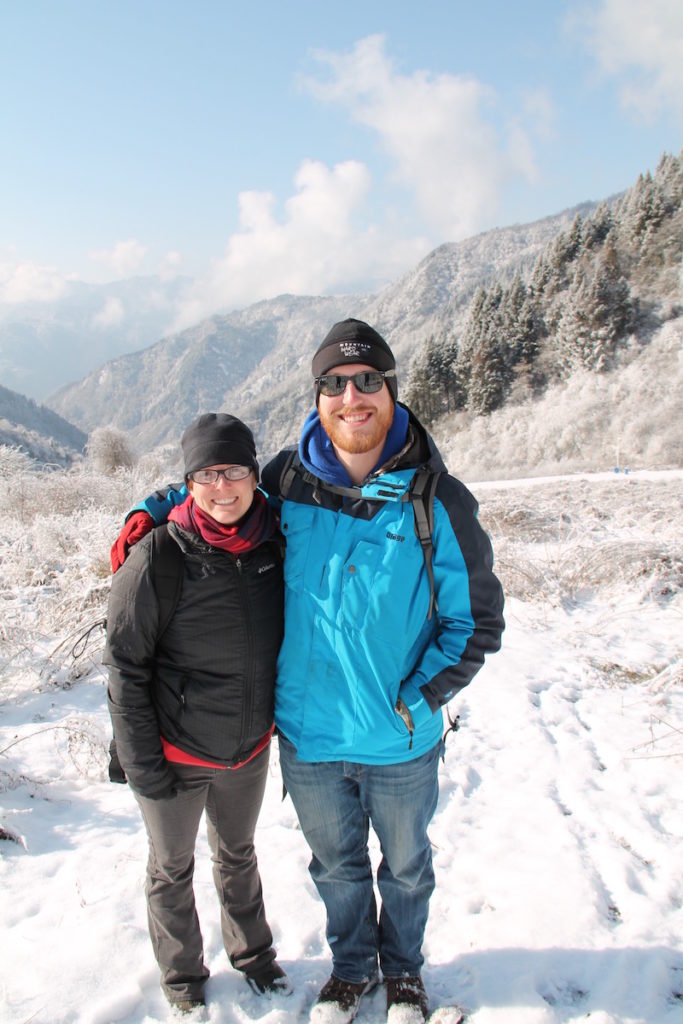
Starting the hike up.
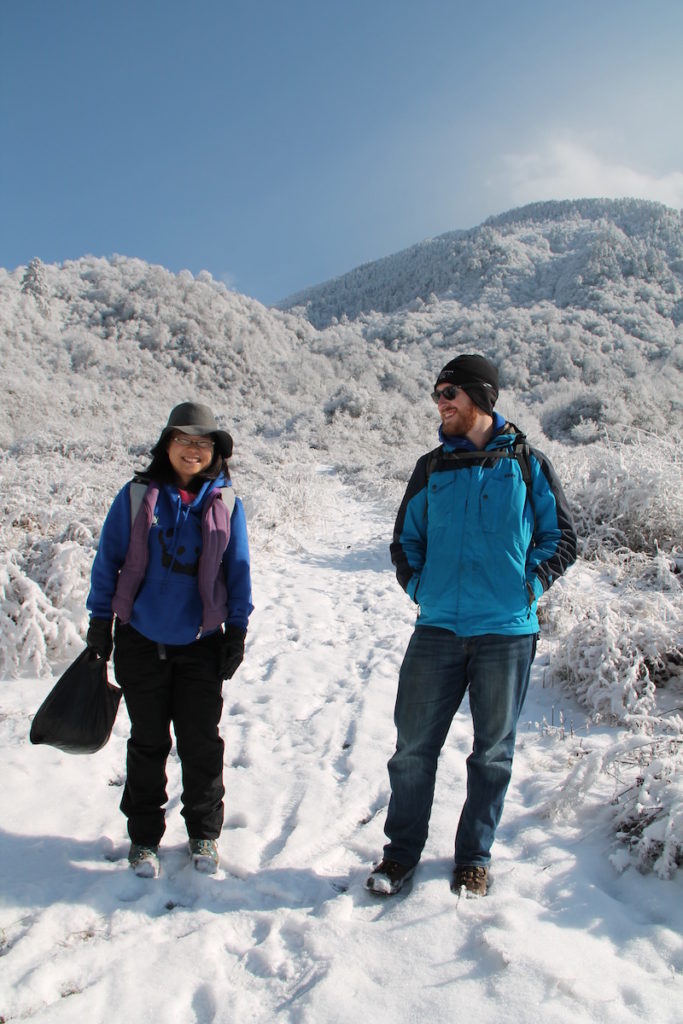
Meng Meng, the CCRCGP worker that will be helping us with the project, and Zachary David grudgingly posing for a “mom” picture.

Along the hike are multiple signs warning local people not to enter the area.

An absolutely beautiful, snowy day for a hike through Tiantai Shan’s gorgeous scenery.
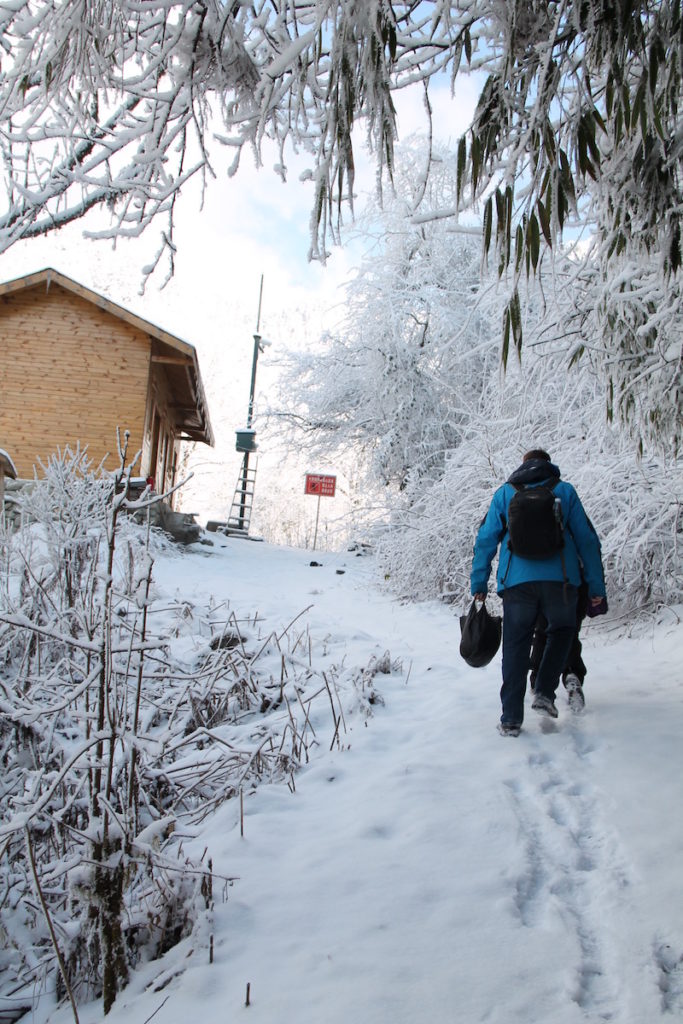
~30 minutes later we arrived at Tiantai Shan Field Station.
After a 30 minute hike we arrived at Tiantai Shan Field Station which wasn’t nearly as rustic as I had imagined in my head. It’s equipped with 5 beds, wifi, television, heaters, and hot water! The keepers treated us to a nice warm lunch and we got out the camera equipment to test how it would workout for us here. Sadly, the cellphone portion (it has the ability to text message us with a photo when the camera is tripped limiting our visits into the pen) of our fancy camera didn’t work, and so we took it back down to Gengda to trouble shoot that night. Worse case scenario we’ll be using it as “just” a camera trap.
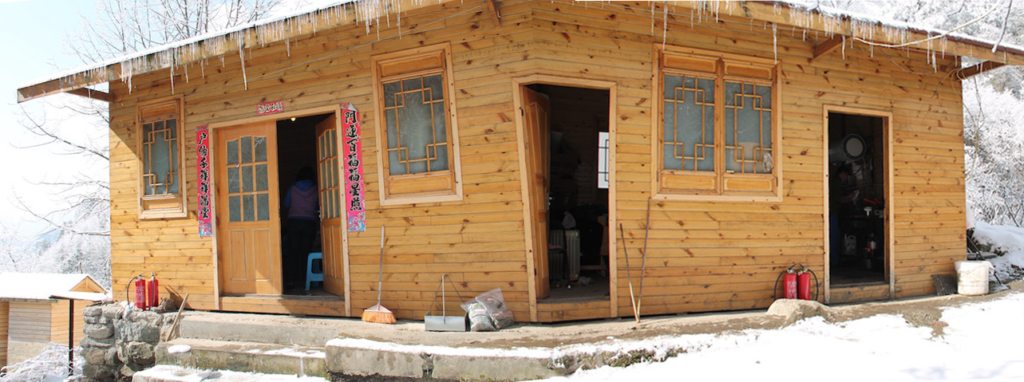
A slightly bad panoramic of the outside of Tiantai Shan. It consists of 3 rooms, the living quarters (the door on the left), the storage area (center), and the kitchen (door on the right). The bathroom is the little building at the very back left corner of the photo.

The living quarters with heat, televisions, wifi, and 5 beds.
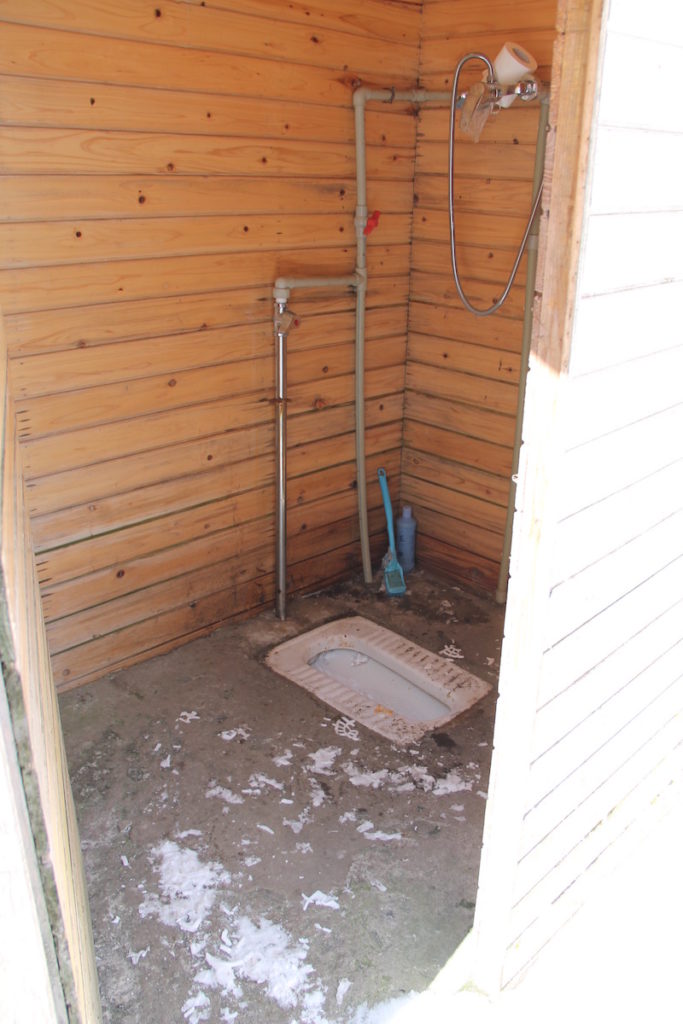
The typical Chinese squatter toilet bathroom – don’t know if you can see the icicles around the rim of the toilet or not but let’s say it would probably be super cold using that shower!
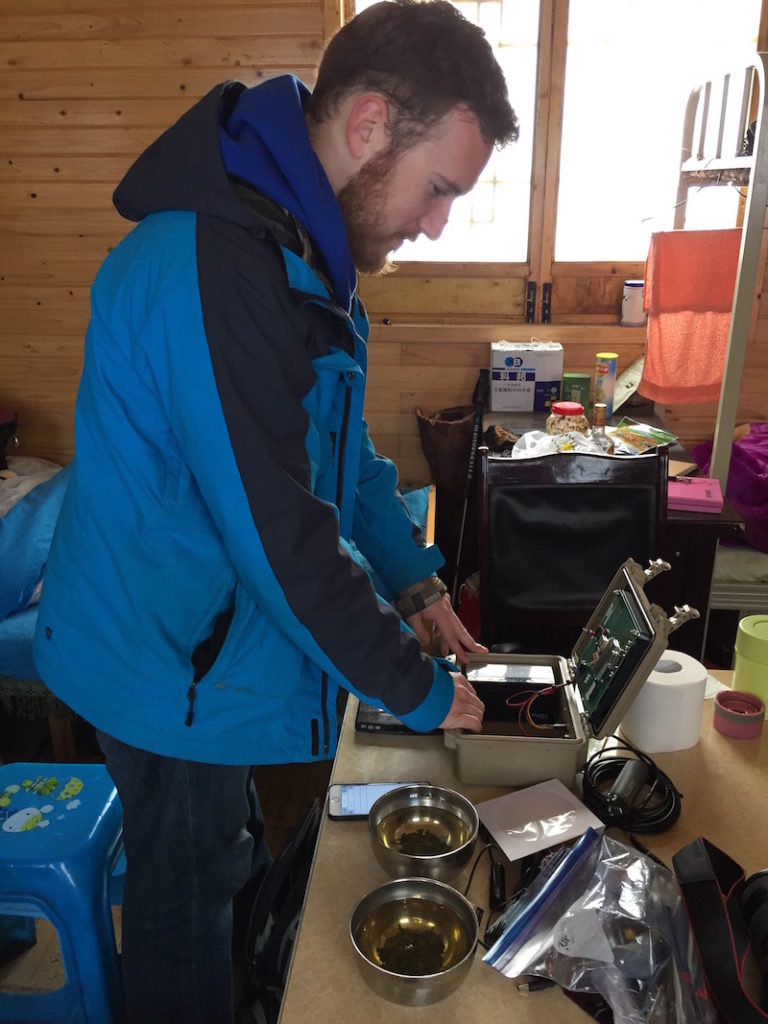
Zachary David setting up and testing our camera trap equipment
With another ~300 meters hike up the ravine behind the station we finally got our first glimpse of the actual training pens. We didn’t have to suit up in the infamous panda suits since we were just discussing the study design and viewing the actual pens with the keepers.

Aerial view of the training pens. Enclosure 1 (Si Xue & cub) is the lower right enclosure fully outlined, Enclosure 2 (Xi Mei & cub) is the upper enclosure, and Enclosure 3 is not fully in view and is currently empty on the lower left.

Crossing creeks to get to the enclosures
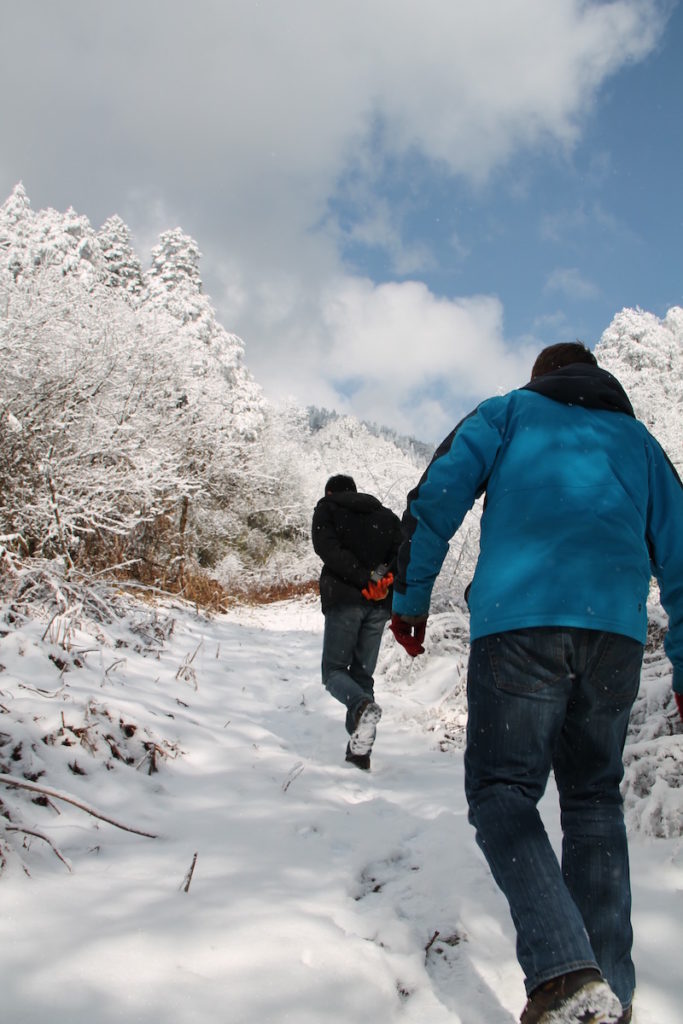
Up some more hills!
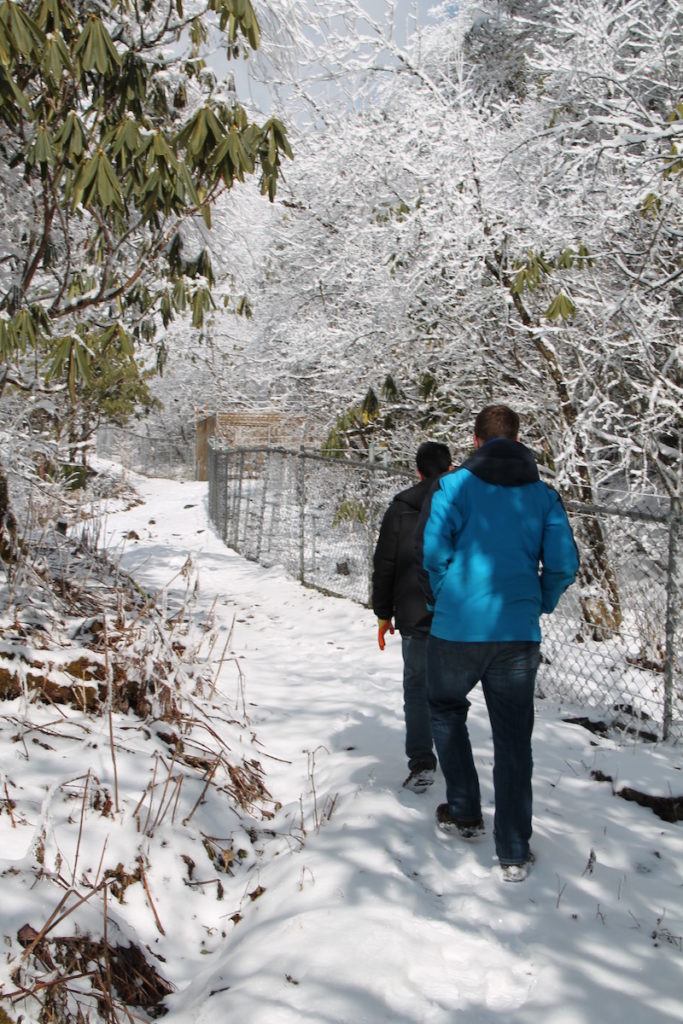
And finally we get a glimpse of the enclosures which are massive!
The enclosures are absolutely huge and traverse the mountain terrain. Enclosure 1 (Si Xue and cub) is 300,000 square meters, Enclosure 2 (Xi Mei and cub) is 400,000 square meters, and Enclosure 3 (currently empty) is 300,000 square meters. All the enclosures are surrounded by a heavy-duty chain link fence which is lined on the inside with 6 levels of electric fencing. Each enclosure has a release site (the brownish fencing in the picture above) where pandas are lured in monthly to get weights (usually just moms and not the cubs). Study design in such a massive space takes on a whole new meaning and is the closest I’ve come to “wild” conditions! I was feeling very apprehensive about leaving Zachary without doing a full run through the research protocol inside the pens but we did a mock set-up to get a feel for the procedure.

Zachary David doing a mock set up of the camera trap. Key is locating a nice scent marking tree for our first trials which will involve introducing various male and female giant panda scent marks and measuring behavioral responses of the pre-release candidates.
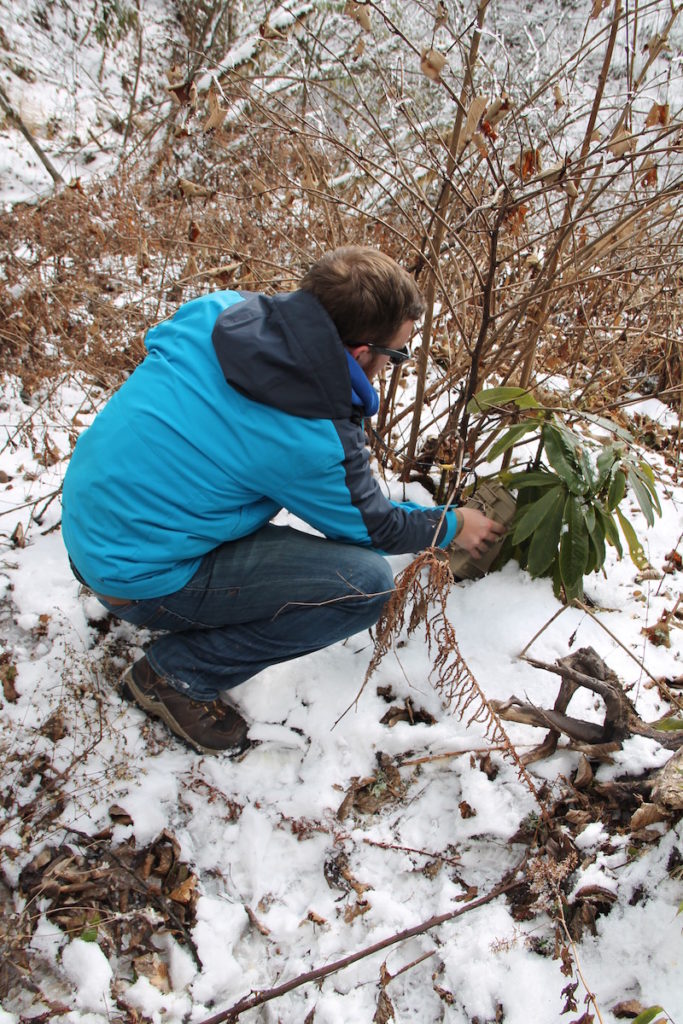
Locating shrubbery that can hide the camera in view of the scent mark stimuli.

Further hiding/disguising the camera to bury it and keep it from view and positioning the small camera.
It was a productive day and we headed back to Gengda at 3pm to write our materials and methods, hash out problems with the camera, and come up with a game plan for the next three weeks.
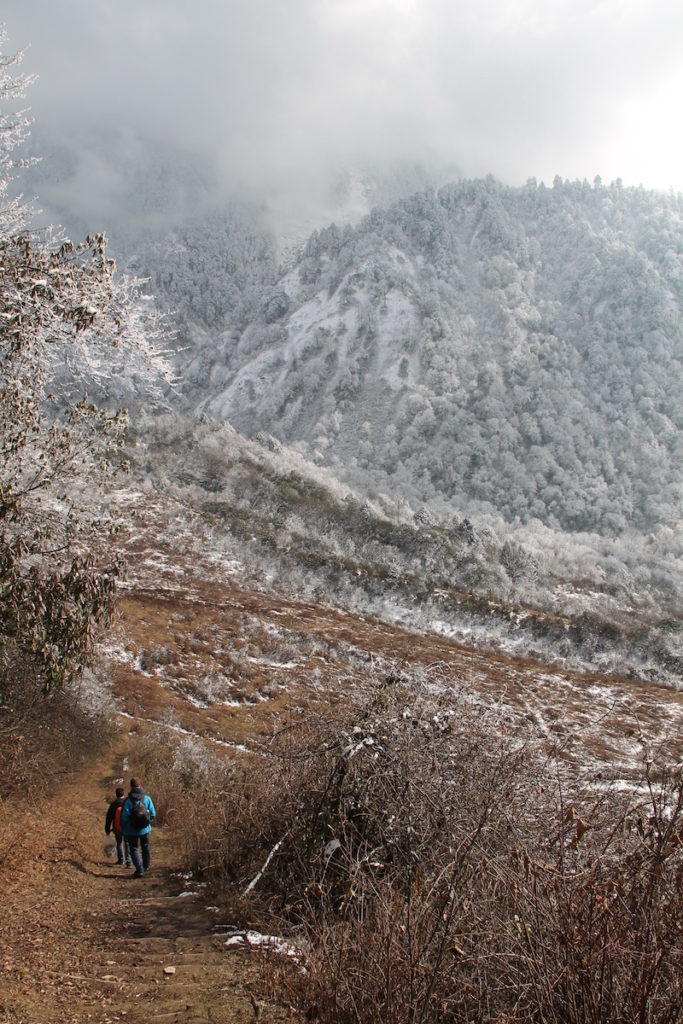
Zachary is doing awesome and I’m feeling super confident in him even though we had limited time together. He’s going to do great! Fingers crossed we have some video to show you guys soon!
-Meg
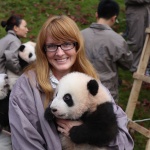
Thanks for reading – let me know if you have any questions by commenting below!


Fantastic pictures. We are so glad everything is going well and hope the reintroduction goes well. Love, Grandma and Granddad David
Thanks so much for sending this to me and for the level of personal dedication that you have for the pandas! I have posted it to my Facebook page – I belong to several panda groups so lots of people should get to see it! I have donated some money towards the lead analyzer – I think you guys do great work and I will donate when I can! Say a big “hello” to Zach and thank him also! How I envy you guys! Much love and gratitude!